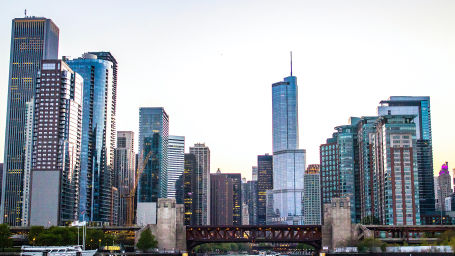

May 10, 2019 | Gunnar Peters, Sr. Director, Emerging Networks, Enterprise Data Product, Spectrum Enterprise

Today, more people live in cities than ever before in our history. By 2050, two out of every three people are likely to be living in cities, according to a report from the United Nations. While cities concentrate people close together for good economic reasons, the influx of more people moving to a city also imposes additional costs. Traffic congestion is one of those additional costs—but it can be met head-on by intelligent traffic management.
The cost of gridlock
We’ve all been there. Stuck in bumper-to-bumper traffic with nowhere to go, and nothing to do. Gridlock is not only incredibly frustrating, but it’s also costly. Here are five problems traffic cause:
- Loss of productivity – As the saying goes: time is money. Last year alone, Americans lost an average of 97 hours a year due to congestion, costing the U.S. economy nearly $87 billion. This is due to a combination of the productivity lost by workers sitting in traffic, the increased cost of transporting goods, and all of the fuel wasted idling.
- Poor air quality – More cars means more smog, resulting in poor air quality.
- Delayed emergency response – With more cars on the road to navigate around, it’s harder for medical, fire, and police responders to answer emergency calls in a timely manner.
- Damaged infrastructure – The volume of vehicles leads to further degradation of physical infrastructure such as roads, highways, bridges and tunnels.
- Fender benders – With more cars on the road, the likelihood of traffic-related accidents also increases, leading to property damage and driving up insurance costs.
So, what’s the solution to avoid these traffic jams and their subsequent costs?
Intelligent traffic management – the ticket to success
In short, the answer is data.
Smart cities around the United States collect and respond to data. For others still on their smart city journey, data collection and response time is on the roadmap. Today, it’s common that someone lives, works, and plays in neighboring cities, and data collection and response time brings those cities closer together. How? Thanks to intelligent traffic management solutions. These data-fed intelligence traffic management solutions are the key to improve traffic flows so that citizens and visitors can get to their desired locations smoothly and safely.
The backbone of any intelligent traffic management system is a reliable, geographically expansive and secure network that connects various devices to edge and cloud-computing platforms. Why? Because intelligence traffic management solutions rely on a variety of Internet of Things-enabled cameras, software and applications to capture data such as vehicle speeds, the volume of bicycles, cars, and trucks on the road, just to name a few. That means, lastly, the role of strong analytics tools helps intelligent traffic management solutions deliver on their potential. By analyzing the captured data, city planners can identify changes in traffic patterns, and ultimately make smarter decisions based on data as they plan infrastructure expansion and maintenance.
While these solutions help leaders plan, they also can help actively reduce congestion through a variety of real-time applications to optimize routing. Here, the location tracking for dynamic routing can use citizens’ mobile asset tracking technologies that they’ve already opted into, and dynamic routing also uses an optimization application that juggles the impact of real-time trends in traffic and weather to quickly devise new routes.
Drive off into the sunset
As more people move to cities, government leaders face challenges to accommodate the growth. Data from intelligent traffic management is only one piece of the puzzle. These solutions are increasingly being integrated with other aspects of the smart city technology ecosystem including smart lighting, surveillance systems, environmental solutions, and connected vehicles to build a broader, smarter city.
To learn more about the path to smart city success, click here.
Speak with a Spectrum Smart Cities Expert







